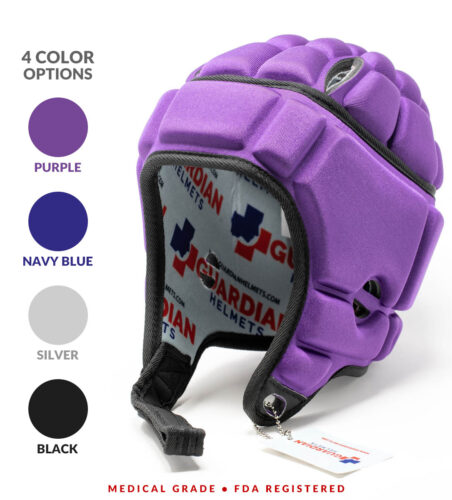
Autism spectrum disorder (ASD) presents unique challenges for individuals and their families, but ongoing research and awareness efforts bring hope and support. ASD encompasses a broad range of neurodevelopmental conditions characterized by challenges in social communication, repetitive behaviors, and sensory sensitivities.
While the spectrum is diverse, recent research has deepened our understanding of the complexity of autism and emphasizes the need for individualized approaches to diagnosis and support the needs of a wide range of individuals.
Recent advances in neuroscience and genetics have yielded valuable insights into the underlying mechanisms of autism. Researchers have identified genetic and environmental factors contributing to ASD, broadening our understanding of its multifaceted nature. Neuroimaging studies have also revealed differences in brain structure and connectivity in individuals with autism, illuminating the neurological basis of the condition.

For instance, magnetic resonance imaging (MRI) studies have identified alterations in brain regions implicated in social cognition, such as the amygdala, prefrontal cortex, and superior temporal sulcus. Moreover, studies have revealed abnormalities in white matter tracts within the brain, affecting long-range connectivity between brain regions implicated in language, sensory processing, and executive function. These neuroimaging findings suggest a complex interplay of structural and functional abnormalities underlying the social communication challenges and sensory sensitivities characteristic of ASD.
As science continues to delve deeper into to the mind to uncover the complexities of ASD recognizing early signs of autism remains crucial for timely intervention. While signs may vary, certain red flags warrant attention, including:
- Lack of or limited eye contact: Difficulty establishing and maintaining eye contact with others during social interactions.
- Delayed or absent speech: Late onset of speech or language development, or difficulty using language for communication.
- Repetitive behaviors: Engaging in repetitive movements, actions, or speech patterns, such as hand-flapping, rocking, or repeating phrases.
- Social communication challenges: Difficulty understanding and responding to social cues, such as facial expressions, gestures, and tone of voice.
- Difficulty with social interaction: Struggles with initiating or maintaining social interactions, forming friendships, or understanding social norms.
- Sensory sensitivities: Heightened sensitivity or aversion to sensory stimuli, such as loud noises, bright lights, certain textures, or strong smells.
- Fixated interests or intense focus: Showing intense interest in specific topics, objects, or activities, often to the exclusion of other interests.
- Difficulty with transitions or changes in routine: Resistance to changes in routine, difficulty transitioning between activities, or becoming upset by unexpected changes.
- Impaired social imagination: Difficulty understanding and imagining other people’s thoughts, feelings, and perspectives, which may affect empathy and social relationships.
- Lack of pretend play: Limited engagement in imaginative or pretend play activities, such as pretending to be characters or engaging in symbolic play.
It’s important to note that not all individuals with ASD will display all of these signs, and the severity and combination of symptoms can vary widely. Additionally, some signs may become more apparent as children grow and develop, while others may improve with early intervention and support. If parents or caregivers notice any of these signs in their child, it’s essential to seek guidance from healthcare professionals for comprehensive evaluation and support. Early intervention can make a significant difference in the lives of individuals with autism, helping them reach their full potential and thrive.

Self-injurious behaviors, including head banging, are not uncommon among individuals with autism and other developmental disorders and are a serious issue for parents and caregivers. These behaviors may serve various functions, such as regulating sensory input, expressing frustration or discomfort, or seeking sensory stimulation.
Head banging involves repetitively hitting one’s head against a surface, such as a wall, floor, or furniture. While the exact reasons behind head banging can vary from person to person, several factors may contribute to its prevalence among individuals with ASD:
- Sensory processing differences: Many individuals with ASD have sensory sensitivities, meaning they may experience sensory input differently than neurotypical individuals. Head banging may serve as a way to regulate sensory input, providing a form of stimulation or comfort in response to sensory overload or understimulation.
- Communication challenges: Communication difficulties are common in individuals with ASD, including challenges in expressing needs, desires, or discomfort. Head banging may serve as a form of communication, signaling distress, frustration, or discomfort when words or gestures are ineffective.
- Sensory-seeking behavior: Some individuals with ASD engage in sensory-seeking behaviors to fulfill sensory needs or preferences. Head banging may provide a source of sensory stimulation or feedback, such as the sensation of impact or pressure on the head.
- Coping mechanism: For some individuals with ASD, head banging may serve as a coping mechanism for managing anxiety, stress, or emotional dysregulation. The rhythmic motion and sensory input associated with head banging may help regulate emotions or provide a sense of control in challenging situations.
- Lack of alternative coping strategies: Due to challenges in social communication and problem-solving, individuals with ASD may have limited access to alternative coping strategies or ways of expressing themselves. Head banging may emerge as a default behavior when other coping mechanisms are unavailable or ineffective.
It’s essential to approach head banging and other self-injurious behaviors with empathy, understanding, and a multidisciplinary approach. Behavioral interventions, sensory strategies, communication supports, and head protection like the Guardian Helmet can all be part of an individualized support plan to help address the underlying needs and challenges driving the behavior.

Guardian Helmet emerges as a valuable intervention in managing self-injurious behaviors like head banging. Designed to provide reliable protection without compromising comfort, Guardian Helmets offer a proactive solution to safeguard individuals with autism and related conditions. The helmet’s sturdy construction and innovative design ensure optimal protection while allowing individuals to engage in daily activities with confidence.
- Protection: Guardian Helmet offers a protective barrier against head injuries, reducing the risk of harm from self-injurious behaviors like head banging.
- Comfort: Crafted with high-quality materials and thoughtful design, Guardian Helmets prioritize comfort, ensuring individuals can wear them for extended periods without discomfort.
- Peace of Mind: For caregivers and loved ones, Guardian Helmets provide peace of mind, knowing that their loved ones are protected from potential injuries.
- Independence: By mitigating the risks associated with self-injurious behaviors, Guardian Helmets empower individuals with autism to participate in activities with greater independence and confidence.
As we continue to deepen our understanding of autism spectrum disorder and explore innovative interventions, it’s essential to prioritize safety, support, and inclusion for individuals with autism and their families. By recognizing early signs, seeking timely interventions, and utilizing supportive tools like Guardian Helmets, we can create a more inclusive and empowering environment for individuals with autism to thrive. Let’s embrace knowledge, compassion, and innovation as we journey together towards a brighter future for all.

 Guardian Soft Special Needs Helmet
Guardian Soft Special Needs Helmet Locking Chin Strap For Guardian Helmets
Locking Chin Strap For Guardian Helmets

